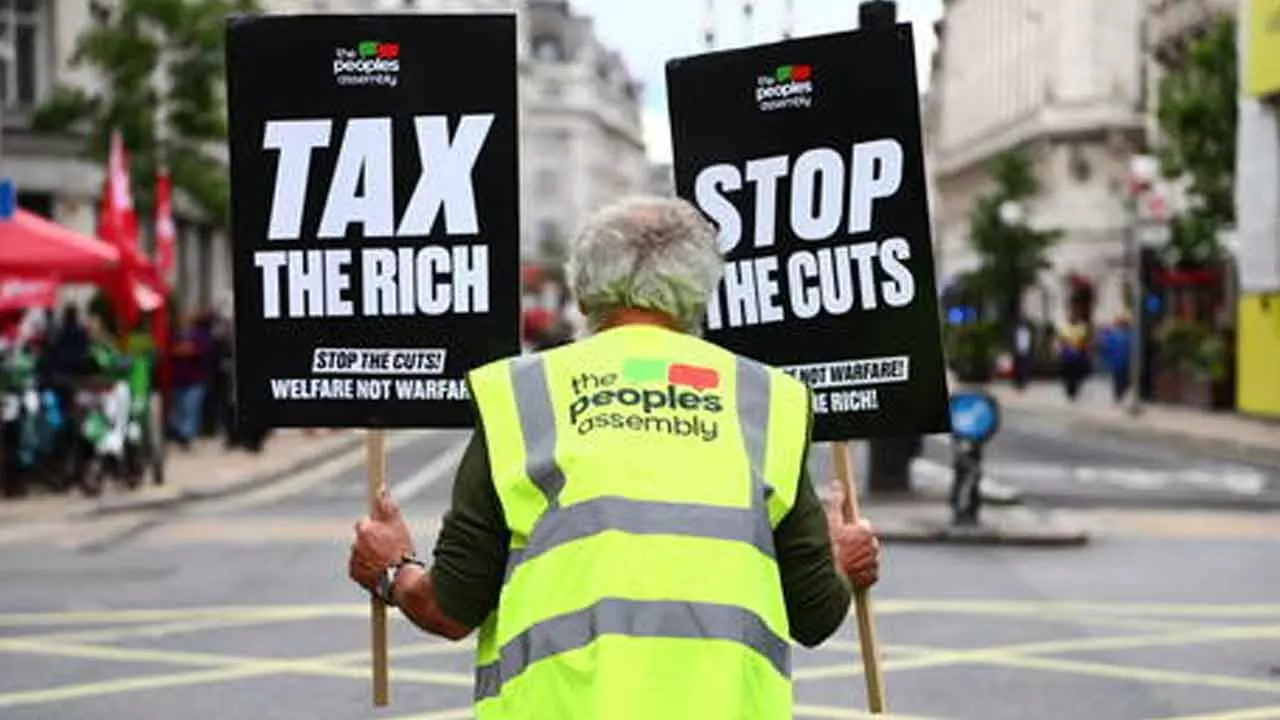Wealth gain of 1% rich since 2015 could end poverty
Wealth gain of 1% rich since 2015 could end poverty

Global wealth growth has the potential to eradicate poverty, but this requires addressing wealth concentration and inequality, not just overall growth. While global wealth is over $450 trillion, enough to end extreme poverty with less than one per cent of the total, the benefits of growth have not been distributed equitably.
Solutions must focus on more than economic expansion and include targeted investment, income redistribution, and a re-evaluation of economic priorities away from GDP growth as the sole measure of progress.
Ending extreme poverty by 2030 could cost between $70 and $325 billion per year, which is a small fraction of global wealth and even less of the gross national income of high-income countries.
Ending extreme poverty requires less than one per cent of the global wealth of over $450 trillion.
The cost of ending poverty is based on the annual cost of ending poverty in 2024 for one year, for the over 3.7 billion people living below the $8.30 a day poverty line, according to World Bank data. The increase in wealth of the one per cent since 2015 would be more than enough to meet this cost 22 times over.
Another way of expressing this is that the total amount is more than enough to completely end poverty for 22 years. This is only indicative, as the cost of ending poverty would likely fall over the next 22 years anyway as the numbers living in poverty reduce, and the value of the wealth would increase as it would not be spent all at once.
But nevertheless this comparison indicates the extent to which more wealth, which is being greatly concentrated in the hands of a few, could be directed to ending poverty instead of further inflating the fortunes of the richest. Can you imagine how challenging daily life would be if you had to survive on less than $2.15 a day? For nearly 700 million people living in extreme poverty worldwide, this is a harsh reality.
Most of them-two-thirds of the global population-reside in Sub-Saharan Africa. When considering all fragile and conflict-affected countries, that figure rises to three-quarters of those living in extreme poverty.
The Covid-19 pandemic has caused an increase in the number of people living in extreme poverty, for the first time in a generation. Progress in important areas, such as childhood vaccination and income equality between countries has been reversed, which has not happened in the past three decades.
If the current trend continues, it is projected that by 2030, a shocking 622 million people will still be living in extreme poverty, and 84 million children will not be able to attend school. It is estimated that it will take almost 300 years to eliminate discriminatory laws, end child marriage and close gender gaps in legal protection.
In 2020, with 71 million more people living in extreme poverty than the year before, the Covid-19 crisis caused the biggest setback in global poverty reduction in decades.
A pause in economic progress amidst low growth, the setbacks of Covid-19, and a heightened sense of fragility all contribute to this current situation.
The world’s richest one per cent increased their wealth by more than $33.9 trillion in real terms since 2015, reveals new Oxfam analysis ahead of the world’s largest development financing talks in a decade, in Seville, Spain.
This is more than enough to eliminate annual poverty 22 times over at the World Bank’s highest poverty line of $8.30 a day. The wealth of just 3,000 billionaires has surged $6.5 trillion in real terms since 2015, and now comprises the equivalent of 14.6 per cent of global GDP.
What the World Bank described as a ‘billions to trillions’ paradigm shift has been a boon for wealthy investors, the richest one per cent own 43 per cent of global assets, but now faces overwhelming evidence of failure, even according to former champions. Alarmingly, there is new momentum behind the idea of diverting the little aid that remains to private financial actors.
New Oxfam analysis shows that between 1995 and 2023, global private wealth grew by $342 trillion, 8 times more than global public wealth, which grew by just $44 trillion. Global public wealth – as a share of total wealth – actually fell between 1995 and 2023.
While progress in eradicating extreme poverty has been incremental and widespread, the persistence of poverty, including extreme poverty remains a major concern in Africa, the least developed countries, small island developing States, in some middle-income countries, and countries in situations of conflict and post-conflict countries.

